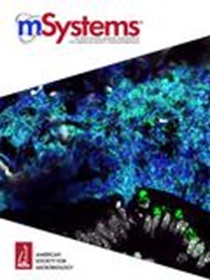综合多样性和网络分析揭示了微生物组动力学的驱动因素。
摘要
微生物群落是生态系统的关键组成部分,微生物之间的相互作用驱动着生物多样性和生产力。由于测序技术的进步,可获得的微生物组数据集数量有所增加;然而,标准分析往往侧重于群落组成,而忽略了共生微生物之间复杂的相互作用。为了解决这个问题,我们开发了一个集成组合和共现网络分析的计算框架。我们将这种方法应用于广泛的微生物扩增子数据集,重点关注植物微生物群,这些微生物群通常具有高多样性,但由于大量低丰度的分类群,仍然具有挑战性。我们表明,确定一个具有代表性的微生物分类群的子集可以捕获整个群落结构,并提高统计能力。从这些分类群中,我们推断出一个大规模的共发生网络,并将丰度共同变化的微生物聚集到多样性测量单位中。这种方法不仅减少了多样性评估中无法解释的差异,而且还捕获了控制组装模式的关键微生物-微生物关系。此外,我们引入了一种基于自举和排列的统计方法来比较不同条件下的微生物网络。我们的方法有力地区分了有意义的差异,并精确地指出了驱动这些差异的特定微生物和特征。这些结果强调了在微生物群研究中纳入微生物-微生物相互作用的重要性,从而获得更准确和有生态意义的见解。我们的框架以R包(“mina”)的形式提供,使研究人员能够通过网络比较确定特定条件的相互作用,并更深入地了解社区生态。该软件包具有广泛的适用性,不仅适用于植物系统,还为利用从农业到生态系统恢复力和人类健康等跨学科的微生物组数据提供了有价值的工具。重要性:了解微生物组动力学不仅需要捕获微生物组成的变化,还需要捕获群落成员之间的相互作用。传统的方法经常忽略微生物之间的相互作用,限制了它们的生态学解释。在这里,我们引入了一个新的计算框架,将成分数据与基于网络的分析相结合,显著提高了对群落变化中有生物学意义模式的检测。通过将该框架应用于来自植物微生物群的大型数据集,我们确定了具有代表性的相互作用微生物群体,这些微生物群体推动了微栖息地和环境条件的差异。我们的分析框架,在R包“mina”中实现,提供了强大的工具,使研究人员能够评估微生物网络之间的统计差异,并检测特定条件的相互作用。我们的框架广泛适用于微生物组数据集,旨在促进我们对复杂群落中微生物相互作用的理解。Microbial communities are key components of ecosystems, where interactions among microbes drive biodiversity and productivity. An increased number of microbiome data sets are available, owing to advances in sequencing; however, standard analyses often focus on community composition, neglecting the complex interactions between co-occurring microbes. To address this, we developed a computational framework integrating compositional and co-occurrence network analyses. We applied this approach to extensive microbial amplicon data sets, focusing on plant microbiota, which typically exhibits high diversity and remains challenging to characterize due to the large number of low-abundance taxa. We show that identifying a subset of representative microbial taxa captures the overall community structure and increases the statistical power. From these taxa, we inferred a large-scale co-occurrence network and clustered microbes with co-varying abundances into units for diversity measurement. This approach not only reduces unexplained variance in diversity assessments but also captures the key microbe-microbe relationships that govern assembly patterns. Furthermore, we introduced a bootstrap- and permutation-based statistical approach to compare microbial networks from diverse conditions. Our method robustly distinguishes meaningful differences and pinpoints specific microbes and features driving those differences. These results highlight the importance of incorporating microbe-microbe interactions in microbiota studies, leading to more accurate and ecologically meaningful insights. Our framework, available as an R package ("mina"), enables researchers to identify condition-specific interactions via network comparison and gain a deeper understanding of community ecology. With broad applicability beyond plant systems, this package provides a valuable tool for leveraging microbiome data across disciplines, from agriculture to ecosystem resilience and human health.
Importance: Understanding microbiome dynamics requires capturing not only changes in microbial composition but also interactions between community members. Traditional approaches frequently overlook microbe-microbe interactions, limiting their ecological interpretation. Here, we introduce a novel computational framework that integrates compositional data with network-based analyses, significantly improving the detection of biologically meaningful patterns in community variation. By applying this framework to a large data set from the plant microbiota, we identify representative groups of interacting microbes driving differences across microhabitats and environmental conditions. Our analysis framework, implemented in an R package "mina," provides robust tools allowing researchers to assess statistical differences between microbial networks and detect condition-specific interactions. Broadly applicable to microbiome data sets, our framework is aimed at enabling advances in our understanding of microbial interactions within complex communities.

 求助内容:
求助内容: 应助结果提醒方式:
应助结果提醒方式:


